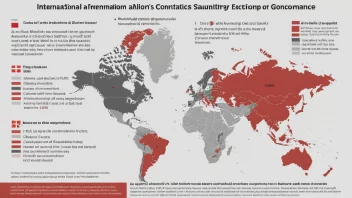What is Microfinance?
Microfinance refers to a range of financial services that are provided to low-income individuals or groups who do not have access to traditional banking services. These services often include microloans, micro-savings, and insurance products. Microfinance aims to empower individuals by providing them with the necessary resources to start or grow their own businesses.
How does microfinance support entrepreneurship?
Microfinance supports entrepreneurship by providing small loans that enable individuals to invest in their business ideas. This access to capital allows aspiring entrepreneurs to purchase inventory, equipment, or even pay for necessary training. By fostering entrepreneurship, microfinance can help create jobs and stimulate local economies.
Who can benefit from microfinance?
Microfinance primarily targets low-income individuals, particularly women, who are often excluded from traditional financial systems. Small-scale farmers, artisans, and vendors are typical beneficiaries of microfinance services. The goal is to empower those who have entrepreneurial spirit but lack the necessary funds to start or expand their businesses.
What are the typical terms of microfinance loans?
Microfinance loans usually have lower amounts than traditional loans, often ranging from $100 to $5,000. The repayment terms can vary, but they typically range from a few months to a couple of years. Interest rates may be higher than conventional loans due to the increased risk associated with lending to low-income individuals.
What are the challenges of microfinance?
While microfinance has proven beneficial, it also faces challenges. High-interest rates can lead to debt cycles for borrowers. Additionally, some microfinance institutions may prioritize profit over social impact, which can undermine the mission of supporting entrepreneurship. It's crucial for borrowers to understand the terms and conditions of their loans.
Can microfinance lead to sustainable business growth?
Microfinance can lead to sustainable business growth when combined with training and support services. Many microfinance institutions provide business training, mentorship, and networking opportunities. These additional resources can help entrepreneurs develop their skills and increase the chances of long-term success.
What are some success stories in microfinance?
There are numerous success stories of entrepreneurs who have thrived thanks to microfinance. For instance, a woman in Bangladesh used a microloan to start a tailoring business, which eventually allowed her to hire others in her community. Such stories highlight the potential of microfinance to transform lives and communities.
What role do governments play in microfinance?
Governments can play a significant role in promoting microfinance by creating supportive regulatory frameworks, providing funding to microfinance institutions, and facilitating training programs for entrepreneurs. By fostering an environment conducive to microfinance, governments can help stimulate economic growth and reduce poverty.
Is microfinance a solution to poverty?
While microfinance is not a panacea for poverty, it can be a powerful tool when used in conjunction with other poverty alleviation strategies. By providing access to capital, microfinance can help individuals start businesses, earn income, and improve their living conditions. However, it is essential to address underlying issues such as education, health, and infrastructure to achieve sustainable poverty reduction.
How can I get involved with microfinance?
Individuals interested in supporting microfinance can consider investing in microfinance institutions, volunteering their time to provide mentorship or training, or even starting their own social enterprise focused on helping low-income entrepreneurs. Many organizations also offer opportunities for donations or micro-investments.
In conclusion, microfinance plays a vital role in supporting entrepreneurship, particularly among low-income individuals who lack access to traditional financial services. While it has its challenges, the potential for positive impact and transformation in communities is significant. By understanding the principles of microfinance and its role in economic development, we can better appreciate its value in fostering entrepreneurship and combating poverty.






